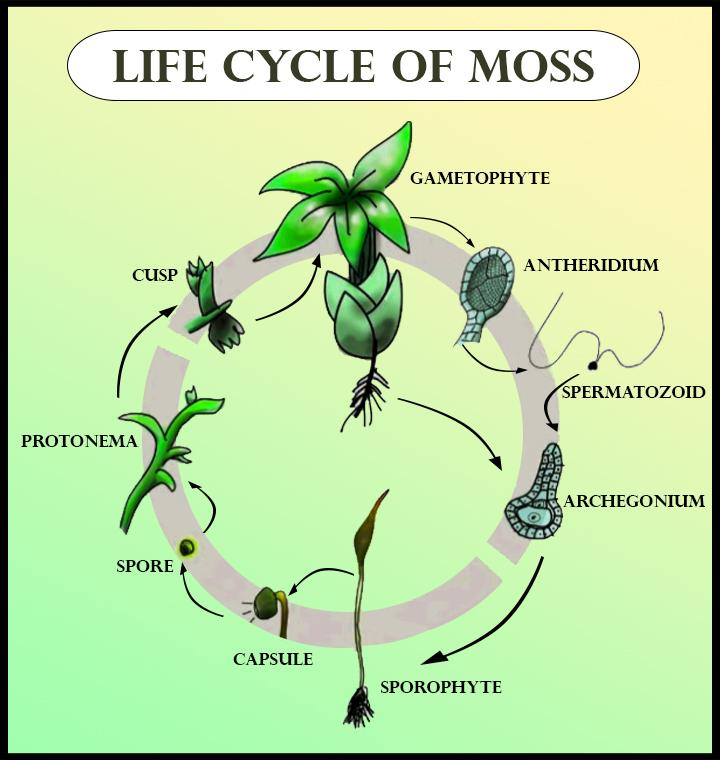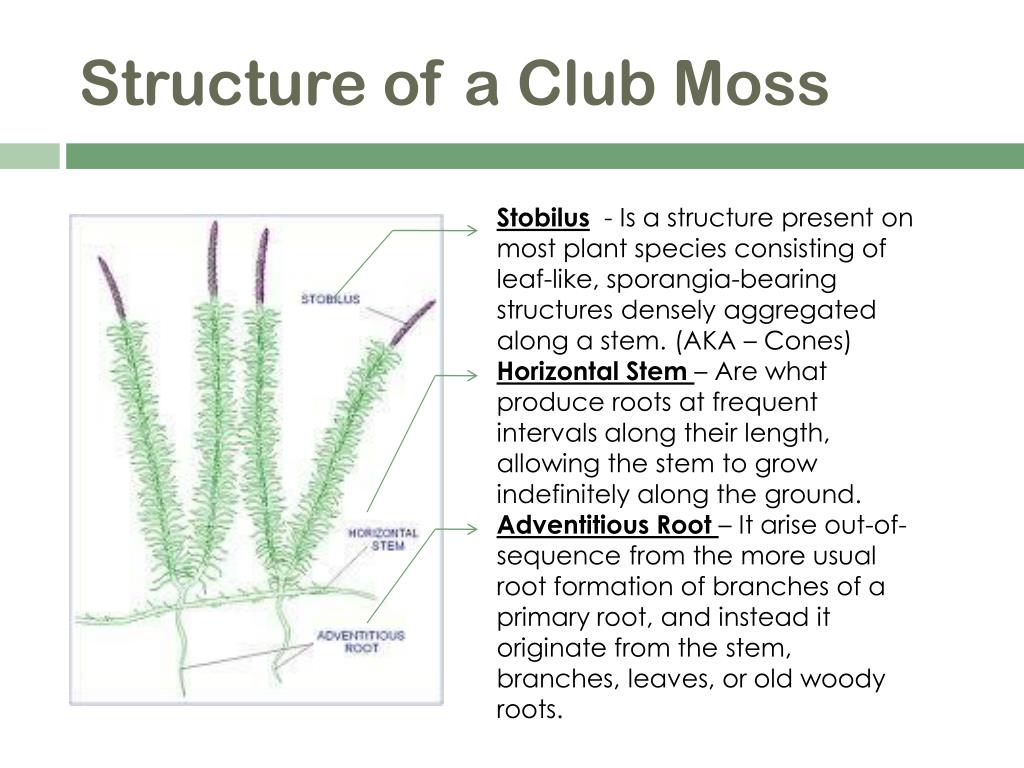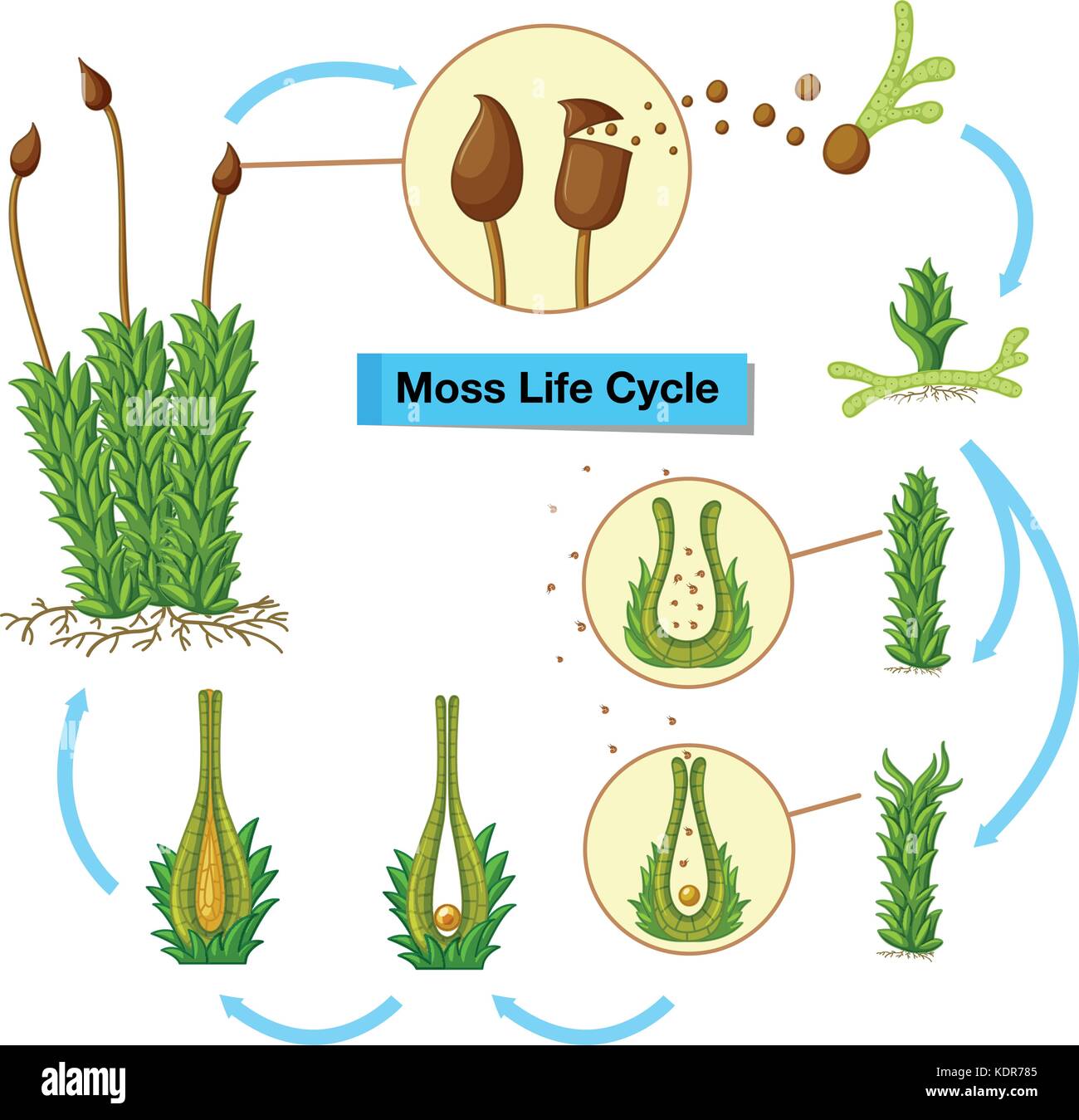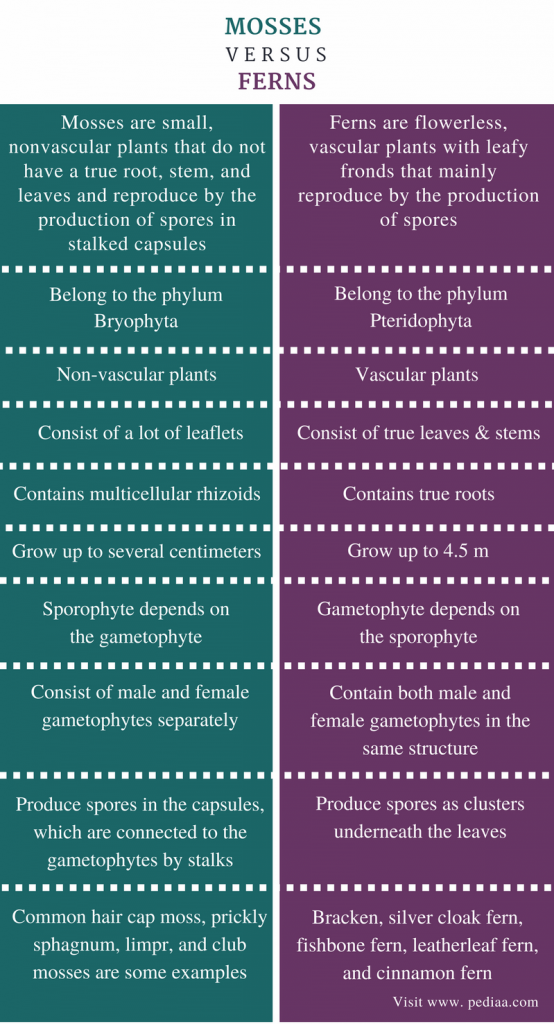43 moss plant diagram
The familiar leafy moss plant is the sexual phase of the moss life cycle. When mature, most mosses develop sex organs . Some mosses have separate male and female plants, whereas others have male and female sex organs on the same plant. In wet conditions, sperm cells are released from male sex ... Vascular Plants - a quick review! They produce free spores, the principal dispersal units, via meiosis. Spore: a reproductive cell, capable of developing into an adult without fusion with another cell. !
Gametophyte of moss: Gametophyte of moss plant is haploid (n). Its body is divided into two stages. (I) Protonema, and, (II) Gametophore. Protonema: Spores produced from the moss capsule germinate in favorable conditions. Spores germinate to form a filamentous, branched and algae-like plant, called protonema.

Moss plant diagram
Moss plant reproduces by two methods, sexual and asexual. Plant itself bears the sexual units, sperms and egg. This part is called gamete-bearing part of gametophyte. When the two gametes fuse, zygote is formed, which develops into the sporogonium. Sporogonium in its turn bears asexual spores. That part is spore-bearing generation or sporophyte. 5 Jan 2022 — Moss, any of at least 12000 species of small nonvascular spore-bearing land plants. ... moss. plant. Alternate titles: Bryophyta, Bryopsida. The moss life-cycle starts with a haploid spore that germinates to produce a protonema (pl. protonemata), which is either a mass of thread-like filaments or thalloid (flat and thallus-like). Massed moss protonemata typically look like a thin green felt, and may grow on damp soil, tree bark, rocks, concrete, or almost any other reasonably stable surface.
Moss plant diagram. Mosses. Mosses are a phylum of non-vascular plants. They produce spores for reproduction instead of seeds and don’t grow flowers, wood or true roots. Instead of roots, all species of moss have rhizoids. The mosses sit within a division of plants called the Bryophyta under the sub-division Musci. A single gametophyte moss plant can produce both sperm and eggs. This can occur on different parts of the same plant, one part producing sperm and another part producing eggs. However, a plant usually produces either all sperm-producing organs or all egg-producing organs at any one time. This way it doesn't breed with itself, promoting genetic ... Moss is a non-vascular plant, meaning that it has no internal system to transport water. Sporophyte of Semibarbula or Moss: Zygote is the first cell of the sporophyte. The zygote (2n) divides, develops and eventually produces a sporophyte, called sporogonium. Moss is a fairy tale plant; small and mysterious, growing on tree trunks and under the canopy of ancient forests, it brings to mind a world of elves and dwarves and trolls. Indeed few people know a lot about moss, but if you look at it closely, you will find wonderful little plants with many shapes and personalities that you can have in your ...
Life cycle of a moss. The familiar leafy moss plant is the sexual phase of the moss life cycle. When mature, most mosses develop sex organs . Some mosses have separate male and female plants, whereas others have male and female sex organs on the same plant. In wet conditions, sperm cells are released from male sex organs (antheridia) and swim ... The moss life-cycle starts with a haploid spore that germinates to produce a protonema (pl. protonemata), which is either a mass of thread-like filaments or thalloid (flat and thallus-like). Massed moss protonemata typically look like a thin green felt, and may grow on damp soil, tree bark, rocks, concrete, or almost any other reasonably stable surface. 5 Jan 2022 — Moss, any of at least 12000 species of small nonvascular spore-bearing land plants. ... moss. plant. Alternate titles: Bryophyta, Bryopsida. Moss plant reproduces by two methods, sexual and asexual. Plant itself bears the sexual units, sperms and egg. This part is called gamete-bearing part of gametophyte. When the two gametes fuse, zygote is formed, which develops into the sporogonium. Sporogonium in its turn bears asexual spores. That part is spore-bearing generation or sporophyte.







![Life cycle of moss [81] | Download Scientific Diagram](https://www.researchgate.net/profile/Serhat_Ursavas/publication/268502605/figure/fig4/AS:310560966103053@1451054912988/Life-cycle-of-moss-81.png)


























Komentar
Posting Komentar